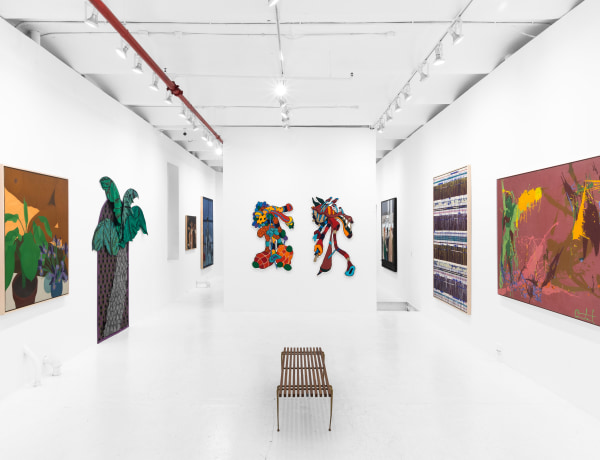
B. New York, NY, 1947
Evelyn López de Guzmán is a first-generation Puerto Rican artist whose abstract paintings are characterized by highly saturated color and reverberating forms. She believes that the originality and exuberance of her work lies in her ability for improvisation, as López de Guzmán rarely works from studies and mixes her own colors. The artist renders shapes and objects observed in the city or the natural world as sharp geometric configurations of concentric or interlocking forms which vibrate with a glowing kineticism. López de Guzmán’s paintings are intentionally up to interpretation and “devoid of any psychological references except those of the observer.” Their orientation and meaning is determined by the viewer, who the artist hopes will freely assign their own feelings to the work. Many of the artist’s compositions have multiple titles based on the direction in which they are hung on the wall.
López de Guzmán often paints on shaped canvases, where the separations between the hard-edged shapes are accomplished by the use of masking tape. Some of the works appear as portals or doorways which draw the viewer’s into pulsating depths of color. The artist’s grasp of negative space and intervals between shapes, which are sometimes highly textured, result in dimensional visual effects that set her apart from the hard-edge tradition of flatness. López de Guzmán also studied pre-Columbian textiles, the tactile influence of which is visible in her work, and in the 1990s began stones, shells, and other collage materials.
López de Guzmán grew up in Manhattan in the 1960's before moving to the Bronx in the mid 70's and eventually to Marine Park in Brooklyn. She received her B.A. and M.A. from Hunter College where she majored in Art and Education and also taught children in Chelsea and Clinton neighborhoods. In the 1970s, López de Guzmán was the first female artist to show at Cayman Gallery in Soho. López de Guzmán’s work is part of the permanent collection of the Museo del Barrio and her painting and prints are hung in U.S. Embassies.